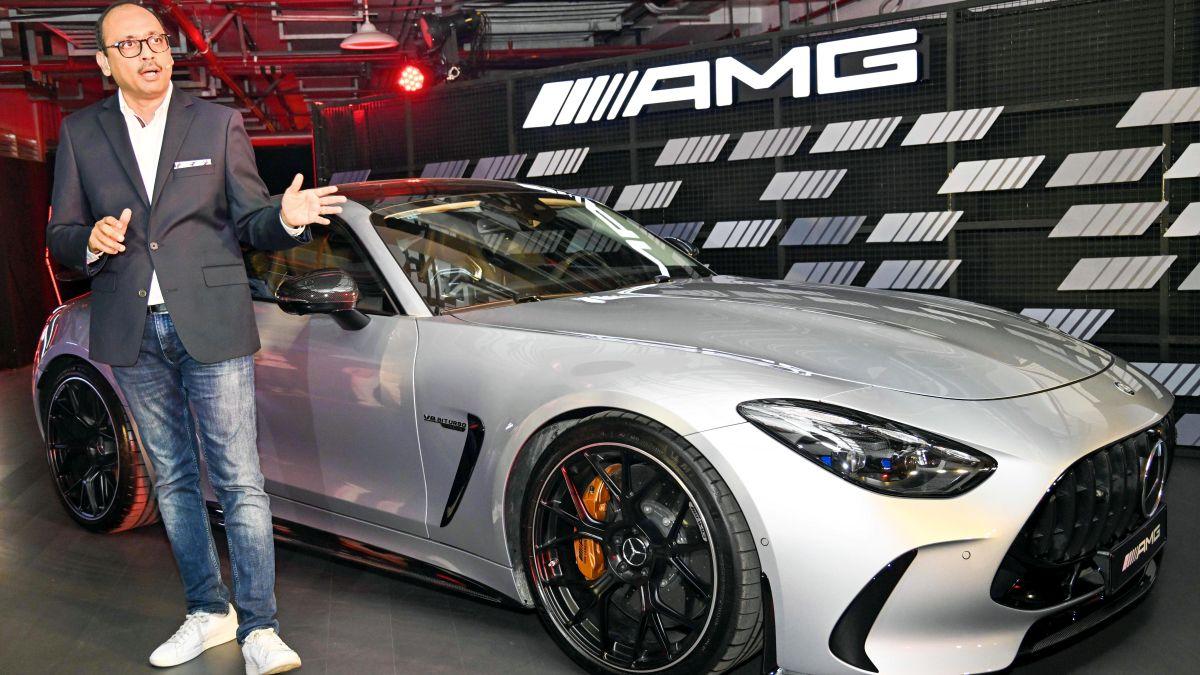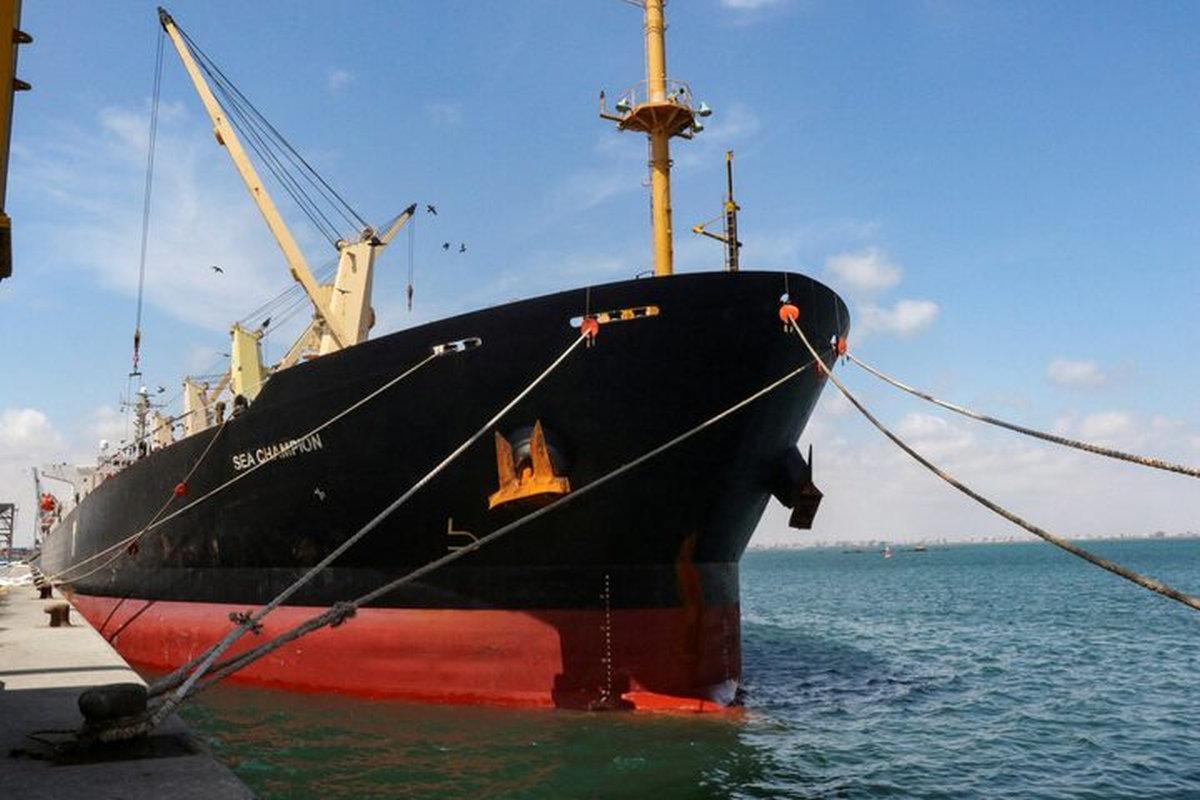‘In the luxury car segment, the adoption of EVs is almost double compared to the mass market.’

IMAGE: MD & CEO, Mercedes-Benz India, Santosh Iyer, unveils the Mercedes-AMG GT 63 and GT 63 Pro, in Mumbai, June 27, 2025. Photograph: ANI Photo
German luxury carmaker Mercedes-Benz posted its best-ever sales numbers in India during the first quarter of 2025-26 (Q1FY26), driven by a stellar showing in electric vehicles (EVs).
Santosh Iyer, managing director and chief executive officer (MD & CEO) of Mercedes-Benz India, talks about growing competition ahead of Tesla’s India entry, and rising craze for sports utility vehicles (SUVs) in a video interaction with Shine Jacob/Business Standard.
Globally, your company witnessed a 9 per cent drop in sales in the second quarter of calendar year 2025 (April to June), with EV sales also dipping by 18 per cent. How was your India performance in Q1FY26 and during the first half of 2025?
India stands out clearly with a 10 per cent (4,238 new cars) growth that we saw in Q1FY26.
The key reason for this growth, of course, is a 20 per cent growth in our top-end segment and 10 per cent in core segment, in addition to EVs.
When we speak about battery electric vehicles (BEVs) specifically, we witnessed a 157 per cent growth.
For us, there is a bit of de-growth in the entry luxury segment. That is because we do not have entry-level cars, and we are not participating in discount sales.
For us, it is more or less an absence of product in the segment. Despite this, an overall growth of 10 per cent is a positive sign for us.
In the luxury car segment, the adoption of EVs is almost double compared to the mass market.
The mass market today is at 4-5 per cent, but luxury is at 8 per cent. This shows customers in the segment are shifting to EVs.
From January to June, the total market looks flat. Estimates indicate that growth may be at 2 per cent in the total luxury car industry during the first half of 2025.
Last year, it was around 22,500 cars, which increased to around 22,900 this year.
Tesla has opened its first store in Mumbai on July 15. How are you seeing the rising competition, with Jaguar Land Rover (JLR) also set to come up in Tamil Nadu soon?
I think competition is always good because it helps customers with more choices.
We at Mercedes-Benz operate in more than 150 countries. Most of these players are present in many markets, and we compete with them.
I think it does not have much of an impact, but it is good for the consumer.
We have been in India for 30 years now and have a very loyal set of customers. They understand the brand differences.
There is space for everyone to grow, and the market should also grow over a period of time. That should help consumers and market development.

IMAGE: Santosh Iyer and Lance Bennett, VP-sales and marketing, pose with the Mercedes-AMG-GT 63 SE performance at its launch at the Buddh international circuit, Greater Noida. Photograph: ANI Photo
In January and June, you had a price rise. Did it impact consumer sentiments?
We had our second price impact on June 1. Owing to the interest rate cut, we were able to pass that on to the market.
For the customer, the monthly instalment was similar. That mitigated the price impact to a large extent.
The third hike will come in September as the euro is in the proximity of ₹100. This is the reason why our outlook is flattish.
This year is going to be a year of consolidation for the industry, and the year is going to see single-digit growth.
What is your take on the SUV revolution in the Indian market?
Around 60 per cent of our sales are SUVs. That is a strong segment. Our latest launch, the GLS AMG Line, is also a luxury SUV.
The segment is growing. However, the largest-selling car in our company, the E-Class, is still a sedan. When we look at the fuel mix today, 55 per cent is petrol, 8 per cent is electric, and the remaining 37 per cent is diesel.
There is a view that electrification demand is eating into diesel, but you can see that it still continues to have a strong presence.
India has a minuscule share in your global sales. How do you see the market evolving?
We have to operate in markets based on demand. In India, we have sold more than 200,000 cars in the last 30 years, out of which 150,000 we have sold in the last ten years.
More interestingly, we have sold 100,000 in the last six years. There is a growth momentum that we can see, with the last couple of years seeing very high growth.
This year, we may see it stabilising or again coming back to the trajectory.
In the luxury car space, we would not like to chase numbers. Neither globally, nor in India.
We have to be cognisant that we have to cater to market demand and be patient for the market to grow.
The penetration of luxury cars in the total market is 1.1 per cent. If you look at Tier-I markets, the penetration is at 2.4 per cent, in Tier-II it is at 1.1 per cent, and Tier-III at 0.5 per cent.
There is no one India for the segment. That is why we are introducing the right products, the right business model, and the right customer experience. Growth will come in a matter of time.
How do you see geopolitical issues like the rare-earth crisis, and also the upcoming trade deal between India and the US?
We are not impacted because of supply chain issues. We have a sufficient number of kits to produce and are gearing up for the festive season.
Hopefully, we should be able to navigate the supply chain challenges. At this stage, we do not have any impact from the rare-earth crisis. With regard to the trade deal, we always advocate free trade.
Feature Presentation: Rajesh Alva/Rediff




